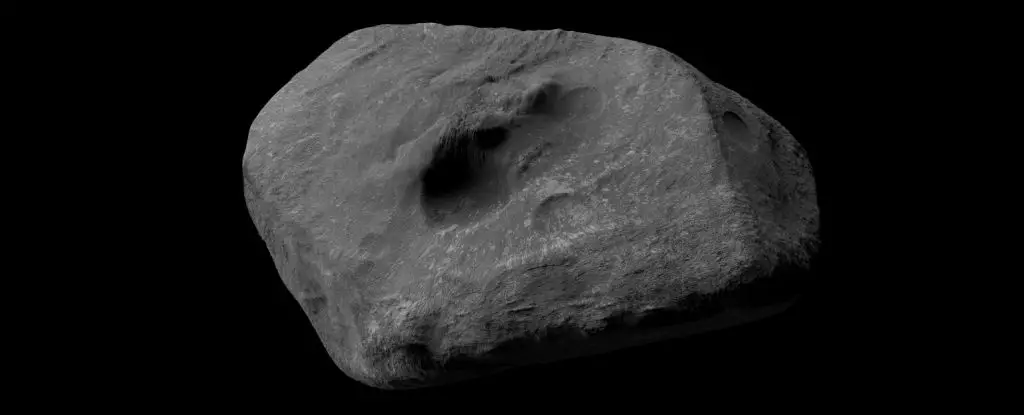The celestial mechanics of our Solar System continually present us with revelations that both fascinate and invite caution. One of the most striking recent discoveries is that of asteroid 2024 YR4, which made its dramatic entrance into public awareness on December 27, 2024. Contrary to the belief that it simply popped into existence, this asteroid has deeper cosmic roots and origins that merit careful consideration and exploration.
A Surprising Origin Story
Asteroid 2024 YR4’s discovery underscores a fundamental truth about our universe: what we think we know may not be the full story. Astronomers have traced its origins to the central region of the main asteroid belt, situated between Mars and Jupiter. Bryce Bolin from Eureka Scientific highlights a surprising revelation: the central main asteroid belt was previously considered a relatively benign zone with respect to Earth-crossing asteroids. The predominant expectation was that the gravity of mighty Jupiter would effectively keep potential threats at bay. The irony is stark—Jupiter, often viewed as Earth’s protector from cosmic threats, played a crucial role in nudging YR4 towards our planet. This gravitational interaction, while originally alarming, serves as a compelling reminder of the intricate dynamics that dictate celestial bodies’ movements.
The Immediate Dangers: Reassessing the Threat
When 2024 YR4 was first detected, it sent ripples of concern through the astronomical community and the public alike, mainly due to its designation as a “{city killer}” asteroid. In colloquial terms, should it ever impact Earth, the resulting devastation could be catastrophic. Initial assessments suggested it might approach Earth again in 2032, inciting fears of potential catastrophe. Thankfully, further observations have downgraded that threat to a minuscule chance, with the Moon now considered more likely to bear the brunt, albeit still with limited probability. This ongoing evaluation is vital not just for immediate safety, but it also highlights the importance of diligent monitoring of space objects that could become hazardous in the future.
The Complex Anatomy of 2024 YR4
Understanding the physical characteristics of 2024 YR4 can yield crucial insights into the nature of asteroids and their potential risks. Utilizing advanced telescopes such as the ones at W.M. Keck and Gemini South, researchers uncovered that this rock exhibits a peculiar rotation and shape: it spins every 20 minutes in a retrograde direction—an intriguing twist in itself. Significantly, its flattened, irregular form resembles a hockey puck, departing from the more common potato-shaped forms associated with its celestial kin. This abnormal morphology offers a window into its formation history and structural integrity, key factors for determining potential deflection strategies should it pose a significant threat in the future.
Asteroid Classification: What YR4 Tells Us
Asteroids come in diverse shapes and compositions, often classified into categories based on their mineral make-up and physical characteristics. The more common carbonaceous asteroids are usually loose aggregates of materials. In contrast, 2024 YR4 likely belongs to the S-type category, composed mainly of metallic silicates. Understanding its composition not only helps refine potential deflection strategies but also aids in assessing the risks posed by similar near-Earth objects.
Measuring between 30 and 65 meters in diameter, 2024 YR4’s dimensions are particularly noteworthy within its classification. These dimensions, coupled with its unique morphology, prompt questions about the origins of such asteroids and the dynamics that lead to variations in their physical traits.
The Road Ahead: A Focus on Prevention
The urgency to expand our knowledge of asteroid 2024 YR4 cannot be overstated, especially given its potential to impact celestial bodies, including our Moon. As we refine our observational techniques and understanding of asteroid behavior, each revelation serves to bolster our planetary defense strategies. By identifying YR4’s characteristics and origins, researchers can better predict the pathways of similar asteroids that might catch us off guard in the future.
As astronomers continue to monitor this unexpected interloper, they are not just gearing up for a distant potential threat; they are also laying deep-rooted frameworks for astrobiology and space risk management. The journey of 2024 YR4 is not merely a case of discovering another asteroid; it’s about unlocking the broader cosmic narrative that can protect us and guide our understanding of the universe.

